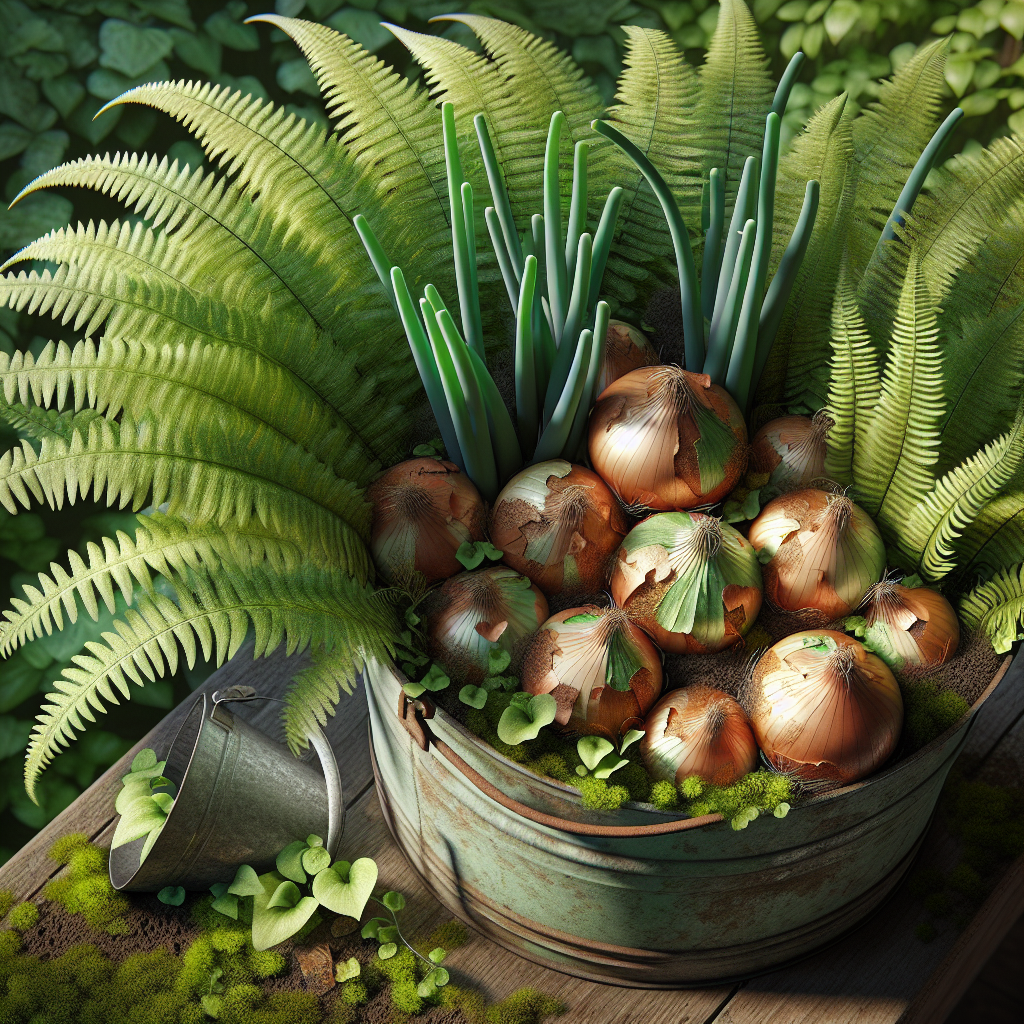Combining Onions and Ferns in Container Gardens
Container gardening has become increasingly popular in recent years, as more and more people are looking for ways to grow their own food and beautify their outdoor living spaces. While traditional container garden plants like herbs, flowers, and vegetables are always popular choices, some gardeners are thinking outside the box – or should I say outside the pot – by combining unexpected plant pairings. One such pairing that may surprise you is onions and ferns.
Onions are a staple ingredient in many kitchens around the world, prized for their pungent flavor and versatility in a wide range of dishes. They are relatively easy to grow and can thrive in container gardens with proper care. Ferns, on the other hand, are known for their lush foliage and ability to bring a touch of greenery to any space. By combining these two seemingly unrelated plants in a container garden, you can create a unique and visually interesting display that is sure to impress.
Onions are cool-season vegetables that prefer well-drained soil and full sun. They can be grown from seeds or sets (small onion bulbs) and should be planted about 1 inch deep with 4-6 inches of spacing between each plant. Onions require regular watering, especially during hot weather, but be careful not to overwater as this can lead to rotting. Fertilize onions every 2-3 weeks with a balanced fertilizer to promote healthy growth.
Ferns, on the other hand, are shade-loving plants that thrive in moist, well-drained soil. They do not require as much direct sunlight as onions do, making them an ideal companion plant for growing together in a container garden. Ferns come in a wide variety of shapes and sizes, from delicate maidenhair ferns to large tree ferns. Choose a fern variety that complements the height and texture of your onions for the best visual impact.
When combining onions and ferns in a container garden, consider using a large pot with good drainage holes to accommodate both plants’ root systems. Fill the container with a well-draining potting mix enriched with organic matter like compost or aged manure. Plant the onions at the bottom of the pot, spacing them out evenly according to their mature size. Then arrange the ferns around the edges of the pot or interspersed throughout the onion plants for a more natural look.
Water your onion and fern container garden regularly, keeping the soil evenly moist but not waterlogged. Onions will benefit from consistent watering during their growing season to produce plump bulbs, while ferns will appreciate moisture-retentive soil to keep their fronds lush and green. Mulch around the base of both plants with organic material like straw or wood chips to conserve moisture and suppress weeds.
Fertilize your onion and fern container garden every few weeks with a balanced liquid fertilizer applied according to package instructions. Avoid using high-nitrogen fertilizers on onions as this can promote excessive foliage growth at the expense of bulb development. Instead, use a fertilizer with equal amounts of nitrogen (N), phosphorus (P), and potassium (K) to support overall plant health.
Monitor your onion and fern container garden for pests and diseases regularly so you can take action promptly if any issues arise. Onions are susceptible to aphids, thrips, and onion maggots, which can damage foliage or bulbs if left unchecked. Control pests naturally by spraying plants with neem oil or insecticidal soap at the first sign of infestation.
Ferns may attract slugs or snails that feed on their tender fronds if grown in damp conditions. To deter these pests organically, place copper tape around the rim of your container or set out beer traps nearby to lure them away from your plants. Inspect your ferns regularly for signs of slug damage like ragged edges on leaves or slime trails on surfaces.
Harvest your onions when they reach maturity by gently lifting them from the soil once their tops have turned yellow and begun to dry out naturally. Allow harvested onions to cure in a warm, dry place with good air circulation for several weeks before storing them in a cool dark location for long-term use.
Prune any dead or damaged fronds from your ferns periodically to promote new growth and maintain an attractive appearance throughout the growing season. Over time, some fern species may outgrow their containers and need repotting into larger pots with fresh potting mix every couple of years.
In conclusion…
Combining onions with ferns in a container garden may seem like an unconventional pairing at first glance but it actually makes perfect sense when you consider their complementary growing requirements: full sun vs shade; moist soil vs well-draining soil; edible vs ornamental; pest-prone vs pest-resistant.
By following these tips outlined above for growing onions alongside ferns successfully in containers you’ll be able enjoy fresh flavorful veggies along side stunning foliage – all within arm’s reach! So why not give it try next time you’re planning out your patio planting? Your taste buds will thank you!













